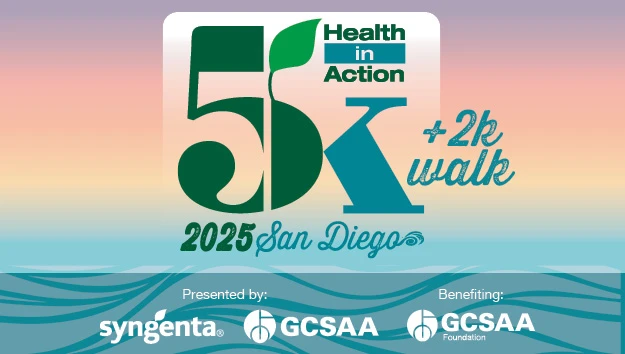It used to be that golf course owners could just open their doors, and golfers would come. But during the early ’80s, things changed. Now owners must be good operators, personnel managers, food-and-beverage experts, customer-service experienced, and advertising and promotion savvy.
|
|
During the ’90s, most golf course owners realized they needed to do more than open the doors, present a respectable product and provide extraordinary player service. They needed to be proficient in all forms of marketing, too.
Most owners and management companies that weathered the financially competitive times from the early ’90s through 2002 are safe. However, there are still a few owners who know their courses are in serious trouble but haven’t succumbed to the financial pressure yet. Last year, 123 courses opened in the United States, and 96 closed, according to the National Golf Foundation. And we can expect similar attrition the next few years.
What happened? As some course owners increased their business, management and marketing acumen the past 15 years, they stayed ahead of the curve needed to survive and thrive in the new golf course economy.
However, the next marketing opportunity, or hurdle, for owners and managers to deal with is here, and it’s in the marketing and customer service area. It’s referred to as e-marketing or Internet marketing. Owners are deluged with supposed electronic opportunities to enhance their businesses. Electronic tee sheets, third parties selling tee times and coupon advertising are just a few. But what is e-marketing? Is this new marketing form something that golf course owners need to be involved with?
E-marketing is a combination of Internet applications used to communicate directly with customers or prospective customers. This need for affordable and targeted communication applies to practically every segment of the golf industry – golf club retailers, daily-fee golf courses, resorts, private golf and country clubs, and even wholesalers. Every segment wants to communicate with current and prospective customers in a targeted, cost-effective manner.
The two main applications of e-marketing are Web site and e-mail programs. As recently as five years ago, most golf course Web sites were little more than static billboards that closely resembled an electronic version of a traditional printed brochure. Presently, most successful Web sites are interactive, offering detailed information and online solutions to capture valuable visitor information, make tee times or reservations, and collect money online securely.
In highly competitive golf markets, consumers have more choices than ever, so it’s imperative for owners to stay connected to their current customer base while attracting new customers. This takes communication; and e-mail marketing, perhaps, is the most targeted and cost-effective way to accomplish this. Whether an owner’s golf segment is daily-fee, resort or private, effective e-mail communication is vital to his success and growth.
It’s also important to understand the CAN-SPAM Act of 2003, which went into effect Jan. 1, 2004. It’s against the law to send unsolicited e-mails to anyone. Even though we know how wholesome and wonderful golf is, sending an unsolicited e-mail about a golf offer is illegal.
The good news is there are dozens of creative ways to encourage customers to opt to receive newsletters and offers. Here are some:
• Be aggressive about collecting names and e-mails. Have your staff hand the golfer at the counter a sheet to fill out name, e-mail and zip code while he’s waiting for change or a credit card receipt to be printed. Get the starter and cart girls in on it, too. Make a contest out of it for the staff.
• Keep your Web site updated and provide multiple registration points for visitors to sign up for your newsletters and offers. Your Web site is often the first contact point for a new customer. Image is everything, and you don’t get a second chance to make a first impression.
• Acquire e-mails from golfers when they call for a reservation. Tell them you want to send them a confirmation of the reservation via e-mail.
• Tournament groups. Obtain e-mails through the golfers or charities setting up tournaments or outings. Send them their tee times for the tournament in your e-mail blast back to them with special e-coupons to return after the event to play your course. To make sure you capture the maximum number in the group, add a raffle prize of your own, maybe a free foursome, a stay-and-play package or something where the participants will have to fill out a card with name, e-mail and zip code to be entered.
• Digital photo page on your Web site. Take pictures of tournament or regular groups on busy days on your signature hole and set up a page on your Web site where a person would have to enter a name and e-mail to see or download the photos.
• Birthday specials. Add a place on your e-mail capture sheets or Web site where golfers can enter their birthday information so you can send out a special offer to them ahead of or on their birthdays. This can be set up to send automatically a few days prior to customers’ birthdays.
Let’s assume you have an aggressive strategy to collect e-mail addresses of your customers, members or resort guests. What are you going to do with the data? Here are a few success stories I’ve been involved with:
1. A private club with 1,000 members converted its monthly newsletter from print to electronic and saved $12,000 annually on printing and mailing costs while improving communication and revenues with members. In addition to a monthly newsletter, weekly reminders are sent each Thursday to remind members about the week’s activities.
2. A semiprivate course sends weekly e-mails to sell infrequently used tee times to local golfers and tracks more than $140,000 from coupons in one year.
3. A 36-hole private club with 1,200 members created a members-only section on its Web site with password protection and uses the Web site to post member directories, by-laws, rules and regulations. This club also uses e-mail marketing to drive daily revenue in all retail outlets of the private club.
Remember, your Web site often is the first contact point for new customers, so keep it, along with your e-marketing plan, updated, and you can improve your chances of landing new customers and retaining existing ones. GCN

Explore the May 2006 Issue
Check out more from this issue and find your next story to read.
Latest from Golf Course Industry
- Indiana course upgrades range with synthetic ‘bunkers’
- Monterey Peninsula CC Shore Course renovation almost finished
- KemperSports and Touchstone Golf announce partnership
- PBI-Gordon Company hires marketing manager Jared Hoyle
- Mountain Sky Guest Ranch announces bunker enhancement project
- GCSAA names Joshua Tapp director of environmental programs
- AQUA-AID Solutions bolsters Sunshine State presence
- Escalante Golf acquires secluded Illinois course







